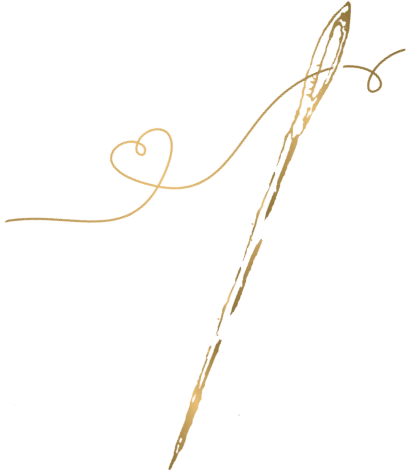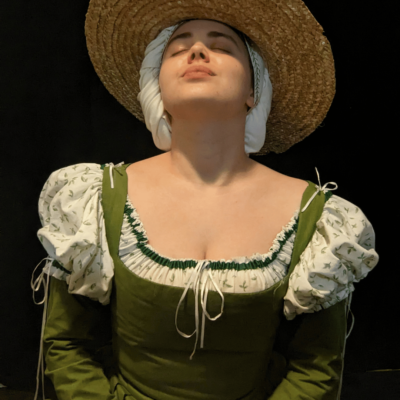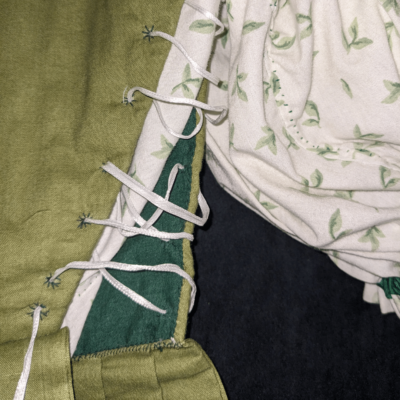FOUNDATIONS REVEALED COMPETITION ENTRY

Lady of the Spring

Outline the story …
When I first heard about the theme of this year's competition, I immediately thought of spring and greenery. New growth is so beautiful and with the timing of this competition lining up right before spring begins, I knew that this would be my main inspiration for this project. I remembered I had thrifted this perfect white bedsheet with a small green leaf pattern a few months prior but wasn’t sure what to make with it.
I scoured my historical costuming books for inspiration, and something about 16th-century farmers just called out to me and felt like it fit well with my inspiration. I then began my thrift hunt for other fabrics that matched my leaf print and found the lovely green cotton I used to construct my kirtle. I already had the dark green used for my apron so this project felt like it came together perfectly for me. After drafting the pattern from the Tudor Tailor and taking measurements for my shift, I set out to work and am quite content with the results!
It's not overly complex, but sometimes the best things in life are simple, like spring returning every year.
(The title of this project, “Lady of the Spring”, is a play on “Lady of the Lake” associated with the legend of King Arthur, but spring can mean both the season and the body of water.)
Outline the construction…
I used mainly period-accurate sewing techniques that I learned from The Tudor Tailor book, including whipstitching the lining in the bodice for clean edges, hand sewing the lacing holes and embroidery stitches on the veil. The only machine stitching is down the skirt side seams and the hem.
All the materials used for this project were thrifted/reclaimed, and I used that to my advantage. The shift is put together using several squares and rectangles cut from a bedsheet (so there were no off-cuts), the top of my apron (including the tie) is already hemmed from the sheet I cut it from, and I used two large rectangles pleated to my waist for the skirt (rather than the more period accurately shaped panels). My tie-on sleeves are fully reversible to increase versatility (can be worn with both sides out or removed entirely).
I made a minor mistle when creating the sleeves as I did not make them large enough to accommodate my massive shift sleeves fitting underneath, so I improvised and now wear the sleeves under for a less historically-accurate look, but something I am still happy with! I do intend to make a new shift with smaller sleeves to be able to wear everything properly.
I also would like to add more reinforcement to my bodice as it tends to crumple at the bust point if I wear it for too long. I added several layers of reinforcement, but no boning and I think that may be the issue.






I really love the 16th century influences especially as you incorporated the hand sewing techniques. And the fact that you have created a full ensemble that feels so well put together while working with thrifted and stash fabric is wonderful.
I love how you improvised with the sleeves (honestly, if you didn’t say anything about them I wouldn’t have thought that it was not meant to be like that!)